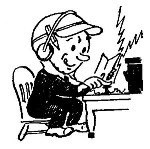Q. How much RF power can a ham legally transmit with?
A. It varies with frequency/band, license class and licensing authority. Maximum transmitter power levels are regulated by country; we will discuss the rules in the USA here. It is one of the important regulatory subjects covered by the question pool for amateur radio license exams.
The average VHF/UHF handheld transceiver (HT) puts out 5 to 10W maximum. A typical VHF mobile rig is capable of 50 to 75W. Most modern HF transceivers peak at 100W.
Before we get to maximum levels, in the USA the general guidance is to use the least amount of power needed.
Of course, that’s easier said than done so many hams just go with the radio’s max power setting unless they know that a lower power setting works well or are operating a weak-signal mode.
In general, US hams are limited to 1500W (1.5kW) peak envelope power (PEP). That doesn’t mean you should, just that you legally can. This applies to General and Extra Class licensees for most bands and Technicians at VHF and higher.

There are specific power limitations on 2200m, 630m, 60m, and 30m bands:

As you can see from the band plan (based on FCC regulations), Technician class licensees have 200W power limits on the HF bands, with HF privileges rather limited already.

So why a would a ham want to use more power than their stock radios can transmit, and how would they increase their default power level?
To answer the why question, it is simply that more transmit power gives more signal energy at the receiving end. Increased wattage improves the chance of making contacts under poor conditions by overpowering signal attenuation and background noise.
To answer the how question, hams use RF amplifiers (linear power amps) to increase the power of their basic transmitter.

This RF power amplifier must operate linearly so that it does not distort the waveform.

RF amps can be for single or multiple bands. More commonly you will find multi-band HF (or HF+6m) amplifiers which tend to be large boxes:

You will also find broadband or single-band VHF and/or UHF amplifiers:

Besides all these commercially available amplifiers some hams build their own. This is partly a nod to tradition—hams being DIY types—and partly because commercial amps may not be readily available for very low or high frequencies.
Ham-speak note: When a ham says that s/he is running barefoot it means raw transmitter output power, unamplified beyond the stock radio capabilities. Typically 100W or less.
Power amps are not just for handheld VHF/UHF FM transceivers; they can amplify most any amateur radio RF signal. They are mainly useful for voice (AM, SSB, FM) and video Continue reading







